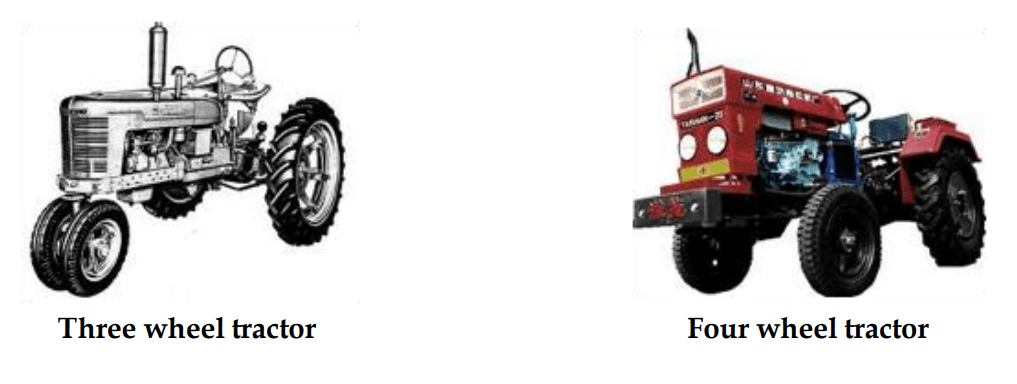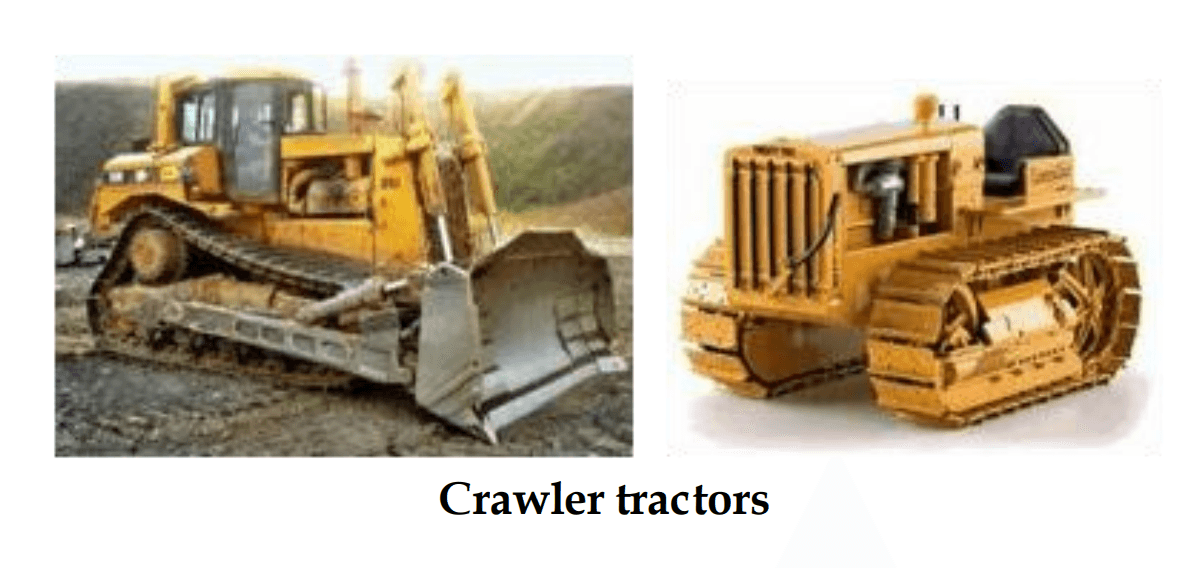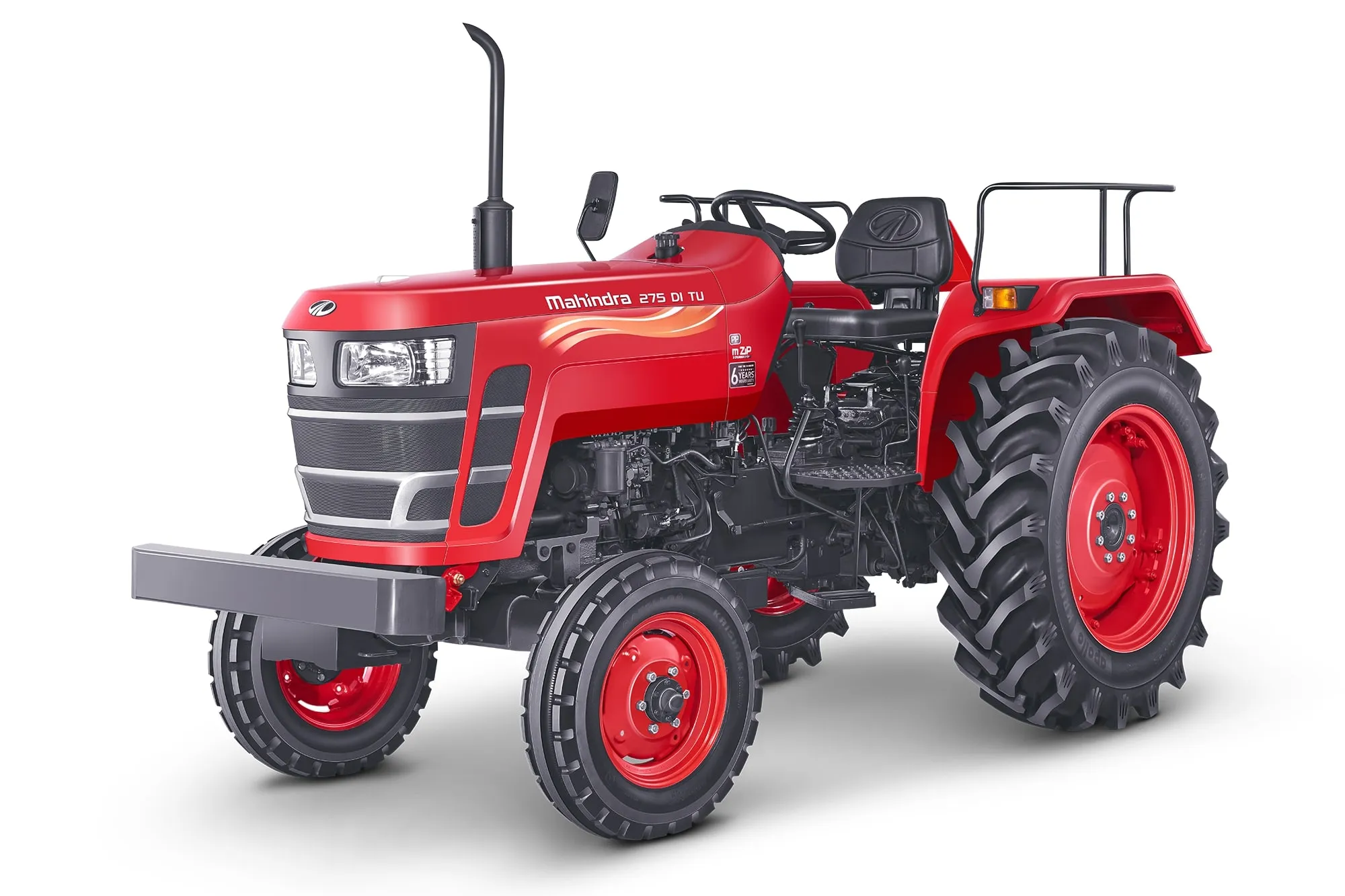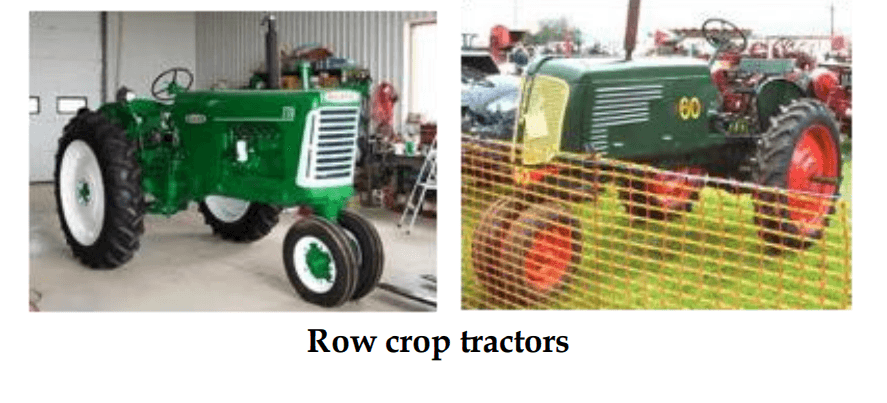Definition
A tractor is a self-propelled power unit having wheels or tracks designed to pull, operate, or transport agricultural implements and machinery, including trailers. It serves as a prime mover for various field operations and stationary farm machinery using Power-Take-Off (PTO) shafts or belt pulley drives.
- The engine of a tractor provides power to:
- Operate active tools (e.g., rotavator, sprayer, seed drill)
- Run stationary machines (e.g., threshers, water pumps)
- Pull trailers and other implements
Types of Wheel Tractors
Wheel tractors are the most commonly used tractors in agriculture. These can be classified as:
- Two-wheel drive (2WD): Power is transmitted only to the rear wheels. Suitable for dry land.
- Four-wheel drive (4WD): Power is transmitted to all wheels. Suitable for wet, hilly, or loose soils.
- Single axle (walking) tractors: Operator walks behind; used in small farms and gardens.
- High-clearance tractors: Used in row crops like sugarcane and cotton for inter-cultivation and spraying.
TRACTOR DEVELOPMENT: A Historical Timeline
Year | Development |
1890 | The word ‘tractor’ first appeared in a patent by George H. Harris (Chicago). |
1906 | First successful gasoline tractor introduced by Charles W. Hart & Charles H. Parr (Iowa). |
1908 | First Winnipeg tractor trials conducted. |
1911 | First tractor demonstration held in Omaha, Nebraska. |
1915–1919 | Power Take-Off (PTO) system introduced. |
1920–1924 | Development of the All-purpose tractor. |
1936–1937 | Diesel engines and pneumatic tires were introduced in tractors. |
1950–1960 | Widespread manufacturing of diesel tractors globally. |
Tractor Development in India
Year | Milestone |
1960–1961 | First tractor manufacturing in India by Eicher Good Earth. |
1962–1970 | New entrants: TAFE (Madras), Hindustan (Baroda), Escorts (Faridabad), and International Harvester (Bombay). |
1971 | Ford tractors production started by Escorts Ltd. |
1973 | HMT Tractors manufacturing began. |
1974 | Kirloskar and Pitti Tractors established. |
1975 | Harsha Tractors established. |
1981 | Auto Tractors began production. |
1982 | Universal Tractors was founded. |
1983–2003 | Production of new brands: GTCL, M&M, Sonalika, VST, L&T, Bajaj Tractors. |
Types of Tractor
I. Based on Purpose / Utility
- General Purpose Tractors
- Use: Plowing, harrowing, sowing, and hauling.
- Features: Medium horsepower (20–50 HP), adjustable track width, and hydraulic systems.
- Example: Massey Ferguson 245, John Deere 5050D.

- Row Crop Tractors
- Use: Designed for crops grown in rows (like cotton, maize, sugarcane).
- Features: High ground clearance, narrow front tires, and adjustable tread.
- Example: Farmtrac Atom, Mahindra Yuvo 575.

- Industrial Tractors
- Use: Construction, loading, and pulling heavy loads.
- Features: Heavy-duty frames, no three-point hitch, and suitable for attachments like loaders or cranes.
- Example: JCB Backhoe Loaders, Escorts F20.
- Garden Tractors
- Use: Gardening, lawn mowing, and small-scale landscaping.
- Features: Small in size, low horsepower (up to 20 HP), suitable for residential use.
- Example: Husqvarna Garden Tractors.
- Orchard Tractors
- Use: Designed for use in orchards and vineyards.
- Features: Compact design, low height, smooth bonnets to avoid damage to branches.
- Example: VST Shakti MT 270, Mahindra Orchard Tractor.
- Implement Carrier Tractors
- Use: Carry and operate mounted or semi-mounted implements like sprayers, seed drills.
- Features: Flat platform, provision for implement mounting on front and rear.
- Example: Specialized versions of general-purpose tractors.
II. Based on Wheel Type
1. Two-Wheel Tractors (Walking Tractors)
- Use: Small landholdings, tillage, and puddling.
- Features: Operator walks behind; 5–12 HP.
- Example: Power Tillers like VST Shakti 130 DI.
- Three-Wheel Tractors
- Use: Older models, now rarely used.
- Features: Single front wheel and two rear driving wheels.
- Limitations: Less stable, discontinued in most countries.

- Four-Wheel Tractors
- Use: Common in modern agriculture.
- Features: Two front and two rear wheels (rear wheels are usually driving wheels), good balance and traction.
- Sub-type:
- 2WD: Rear-wheel drive only.
- 4WD: All wheels powered for better grip and performance.
iii. Based on Track Type
- Crawler Tractors (Track Tractors)
- Use: Heavy-duty jobs like land clearing, construction, and wetland farming.
- Features: Uses steel or rubber tracks instead of wheels, excellent traction on soft soil.
- Example: Caterpillar D6, John Deere 1050K.

IV) Based on Drive Type
1. Two-Wheel Drive (2WD) Tractors
- Drive on: Rear wheels.
- Use: General agricultural operations on firm soil.
- Advantages: Simple, cost-effective.
- Four-Wheel Drive (4WD) Tractors
- Drive on: All four wheels.
- Use: Wetland, hilly or loose soil conditions.
- Advantages: Greater traction, power, and load-carrying capacity.
V. Based on Horsepower (HP)
Category | Horsepower Range | Example Use |
Mini Tractors | < 20 HP | Lawn, gardening |
Small Tractors | 20–30 HP | Intercultural operations |
Medium Tractors | 31–60 HP | General field operations |
Large Tractors | > 60 HP | Tillage, haulage, industrial use |
VI) Based on Fuel Used
1. Diesel Tractors; Most common, efficient, and powerful. Long engine life, used for all types of farm operations.
2. Petrol/Gasoline Tractors; Rarely used due to higher fuel cost and lower efficiency.
3. Electric Tractors Emerging technology, eco-friendly. Ideal for small farms and light tasks.
VII. Based on Control and Steering
- Manual Steering Tractors; Traditional type, requires more physical effort.
- Power Steering Tractors; Reduces operator fatigue, smoother control, especially in heavy-load conditions.
SELECTION OF TRACTOR
Selecting the right tractor is crucial for achieving efficient agricultural operations. The decision should be based on several technical, economic, and environmental factors to ensure optimal utility and cost-effectiveness.
Key Factors Affecting Tractor Selection
- Land Holding
- The size of land is directly related to the required horsepower (HP).
- Recommendation:
- Under single cropping pattern:
➤ 1 HP for every 2 hectares of land.
➤ A 20–25 HP tractor is suitable for 40 hectares of farm. - Under multiple cropping or irrigated land:
➤ 1 HP for every 1.5 hectares.
➤ A 30–35 HP tractor is suitable for the same 40 hectares.
- Under single cropping pattern:
2 Cropping Pattern
- Farms with intensive cropping (multiple crops per year) require higher power.
- Tractors of higher HP ensure timely and efficient field operations.
- Soil Condition
- Soil type affects traction and implement performance.
- Light soils:
➤ Use tractors with low weight, higher ground clearance, and shorter wheelbase. - Heavy soils (e.g., black cotton soil):
➤ Require heavier tractors with more traction and better penetration for tillage.
- Light soils:
- Climatic Condition
- Hot and desert climates:
➤ Prefer air-cooled engines (no risk of water evaporation). - Cold or high-altitude regions:
➤ Again, air-cooled engines are better, as water-cooled engines can freeze in cold weather.
- Repair and Maintenance Facilities
- Availability of local dealerships and service centers is essential.
- Ensure access to spare parts, technical assistance, and trained mechanics nearby.
- Running Cost
- Choose tractors with low specific fuel consumption (SFC).
- Fuel efficiency reduces operational costs in the long run.
- Also consider engine type (diesel is usually more efficient than petrol).
- Initial Cost and Resale Value
- Tractor should offer a balance between affordability and resale value.
- Don’t overspend on high-end models unless fully justified by land size and use.
- Higher initial cost may result in higher loan interest and financial burden.
- Consider brands with good resale markets and reputation.



